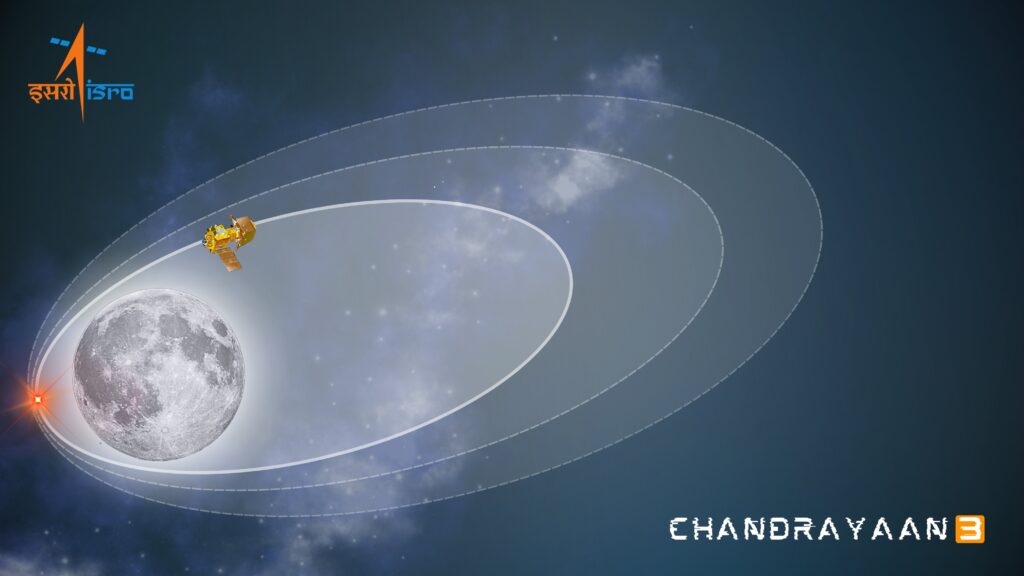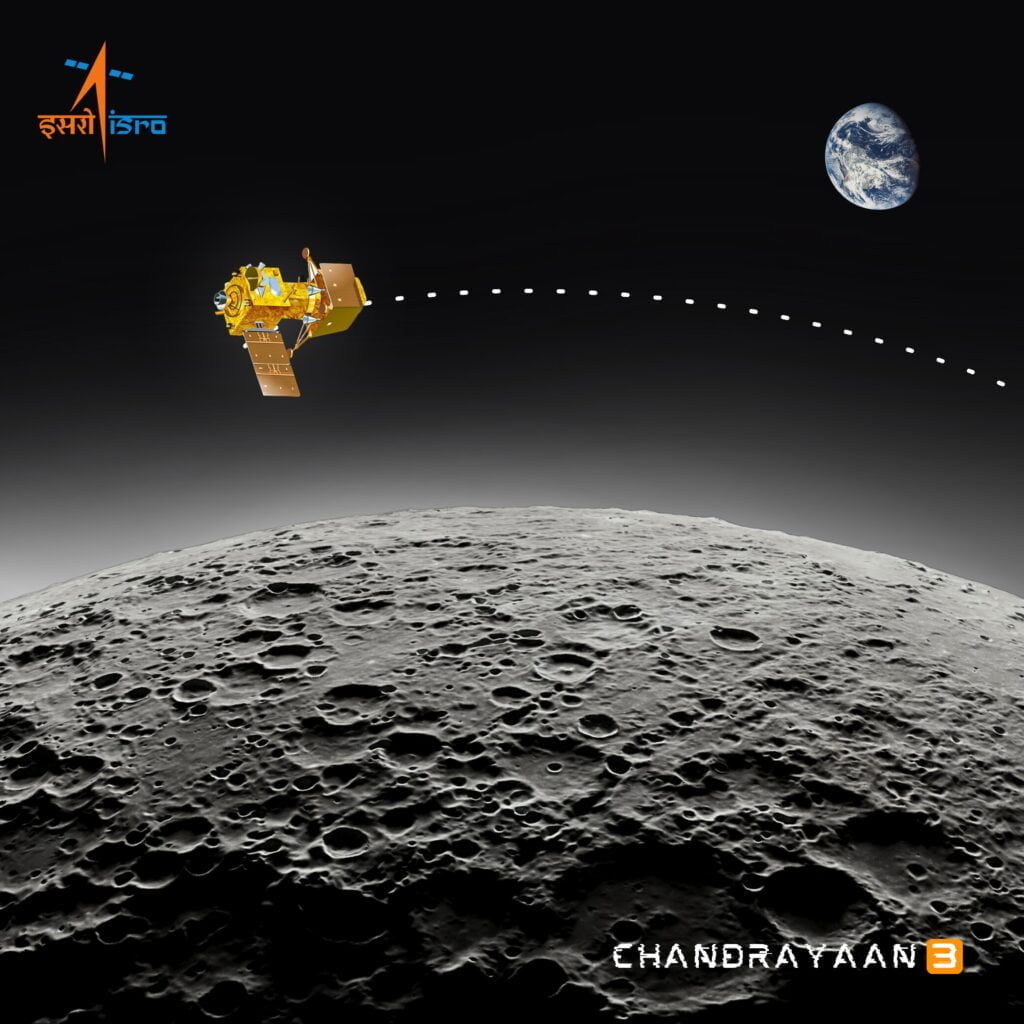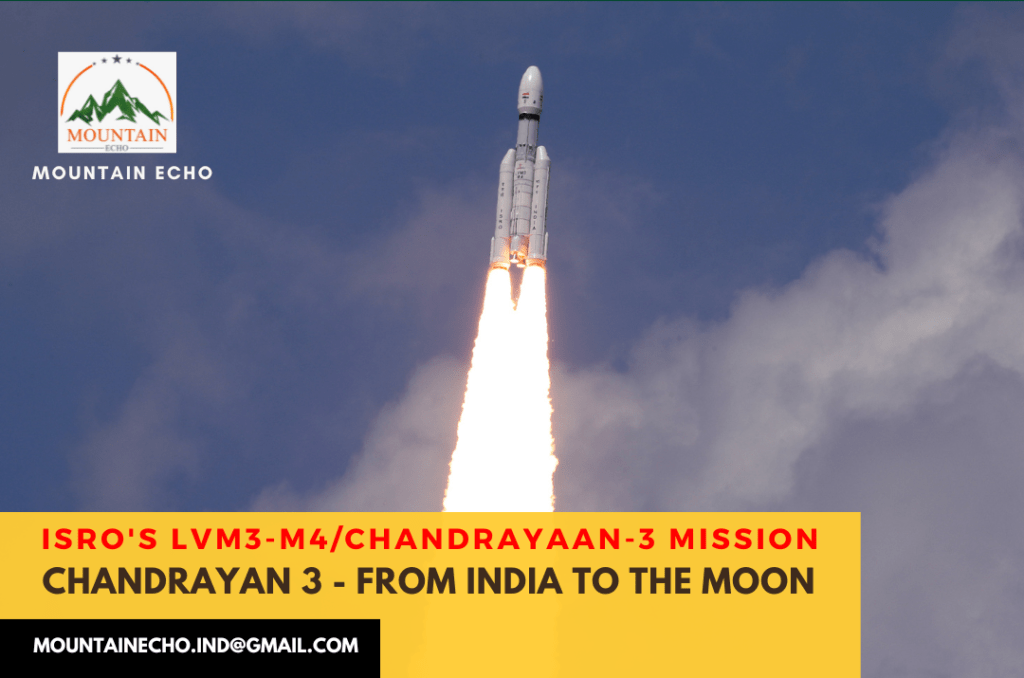ISRO Chandrayan 3: From India to the Moon!
WhatsApp Channel
Join Now
ISRO Chandrayan 3 marks the third lunar mission, following Chandrayaan-1 (2008-09) and Chandrayaan-2 (2019). The Chandrayan 3 spacecraft consists of a lander and a rover. The lander will attempt to touch down on the Moon and then deploy the rover on August 23.
Chandrayan 3 was successfully from Sriharikota on July 14, 2023. Weighing approximately 3896 kgs, the spacecraft comprises various components, like mechanical and electronic systems, navigation sensors, and propulsion mechanisms, all designed to ensure a gentle and secure landing on the lunar surface.
The main objectives of ISRO Chandrayan 3 spacecraft include a soft and secure landing on the Moon, showcasing the prowess of a rover moving on its rugged terrain, and conducting meticulous in-situ scientific experiments. It will take around 33 days from the date of its launch to reach the Moon’s orbit.

Before ISRO Chandrayaan 3, the Chandrayaan-1 and Chandrayaan-2 missions were launched. Chandrayaan-1 was India’s first inaugural moon expedition, launched on October 22, 2008. Its primary goals were to analyze the moon’s chemical and mineral composition and to map its geology through striking images. Through its more than 3400 orbits around the moon, it gleaned valuable insights. Unfortunately, the mission concluded when communication was lost on August 29, 2009.
Chandrayaan-2 was the second lunar exploration mission by ISRO, launched on July 22, 2019, by an LVM3-M1 rocket. On August 20, 2019, it reached the Moon’s orbit. This venture was to study the lunar surface variations and discern the presence and distribution of water. This spacecraft crashed while attempting to land on September 6, 2019.
Then began the story of Chandrayaan-3. Succeeding in this mission would propel India to join the ranks of the United States, Russia, and China as a nation capable of effecting a seamless and triumphant soft landing on the moon’s surface. Chandrayaan-3 was improved in terms of its lander to handle landing problems like Chandrayaan-2. Additionally, research in sensor technology, software development, and propulsion systems was undertaken to fortify the mission’s chances of success.

Presently, Chandrayaan-3 has gracefully settled into lunar orbit, a testament to the expertise of ISRO’s engineers and scientists. The unveiling of the first lunar images captured by the spacecraft resonates as a symbol of this journey’s fruition. If the moon landing becomes a success, the rich data amassed by Chandrayaan-3 will play a crucial role in future lunar exploration initiatives. It’s poised to etch India’s indelible mark on the celestial canvas, contributing to humanity’s expanding knowledge of the cosmos.
Telegram Channel
Join Now



